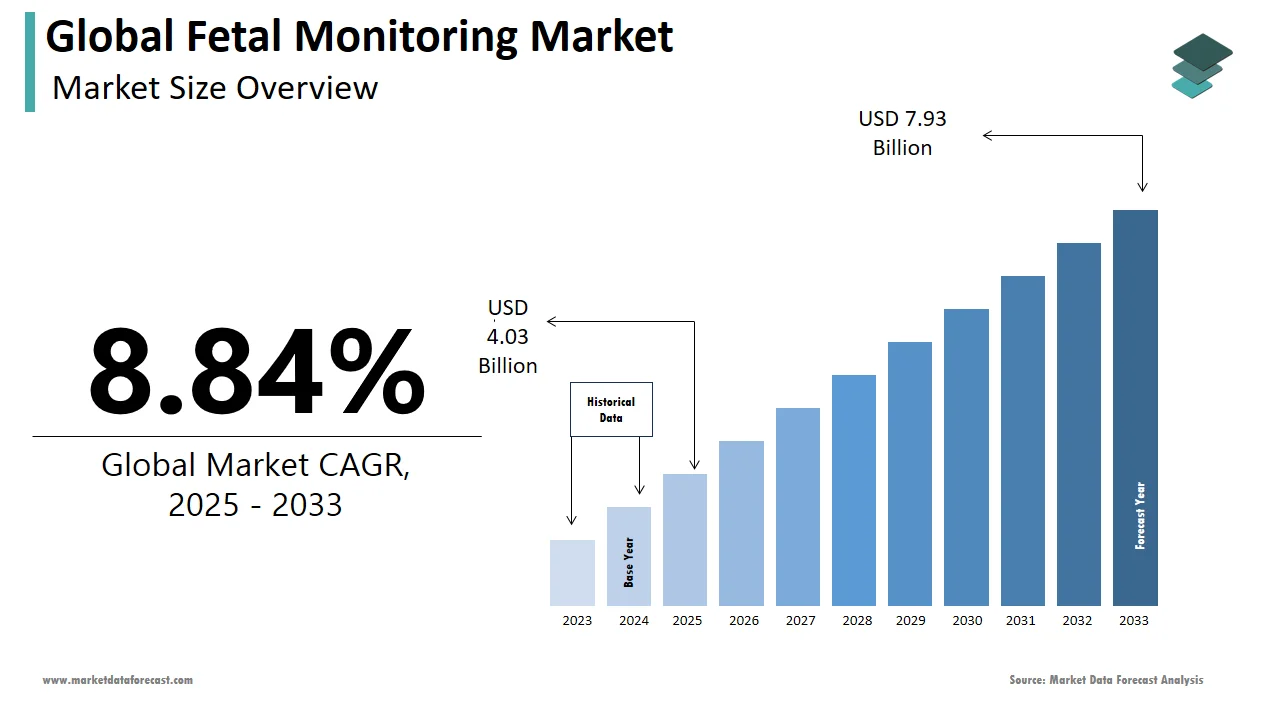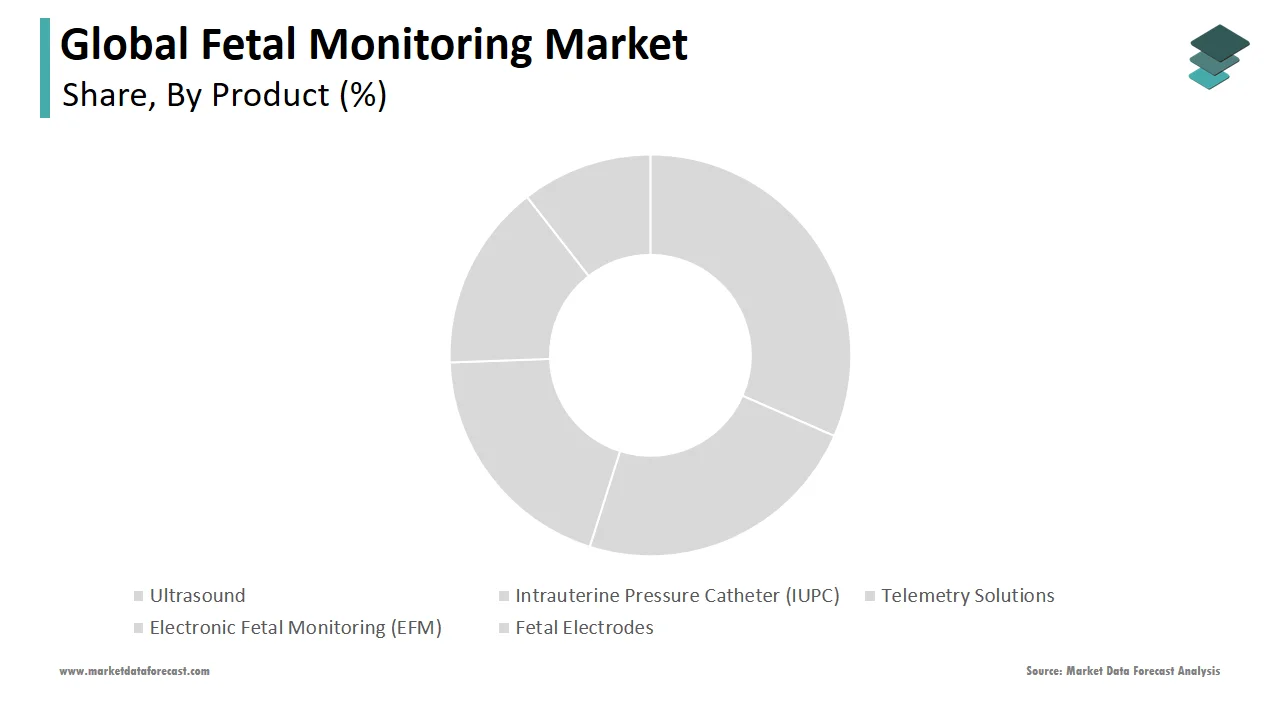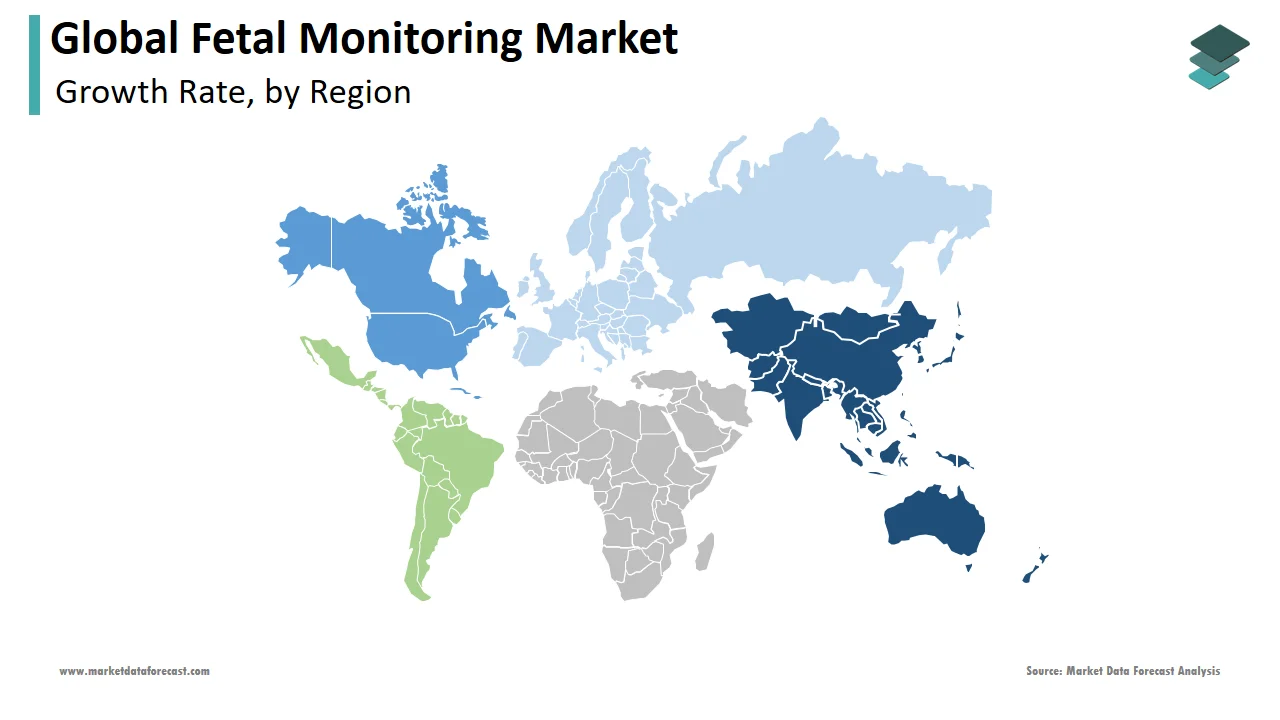Global Fetal Monitoring Market Size, Share, Trends & Growth Forecast Report By Product, Portability, Application, End-User and Region (North America, Europe, Asia-Pacific, Latin America, Middle East and Africa), Industry Analysis From 2025 To 2033.
Global Fetal Monitoring Market Size
The size of the global fetal monitoring market was worth USD 3.7 billion in 2024. The global market is anticipated to grow at a CAGR of 8.84% from 2025 to 2033 and be worth USD 7.93 billion by 2033 from USD 4.03 billion in 2025.

Fetal is one of the early stages of pregnancy, where the baby is starting to develop bodily organs; as such, fetal monitoring is a technique to observe the heartbeats of the fetus and the contractions of the mother's womb to make sure the baby is in a healthy condition. External monitoring with a fetoscope or Doppler poses no known physical risks to the fetus. Still, internal monitoring with an electrode on the scalp could leave a mark on the fetus' head, raising the possibility of minimal infection risk.
MARKET DRIVERS
The growing demand for fetal monitoring during pregnancy is one of the key factors promoting the fetal monitoring market growth.
In addition, the growing number of cases of post-term pregnancy, premature delivery, hemorrhage rate, multiple pregnancies, and the crease in governmental and non-governmental initiatives for maternal and fetal health worldwide are propelling the fetal monitoring market growth.
Advanced and Innovative fetal monitoring technologies to augment market growth.
Due to rapid technological improvement in the healthcare sector, growing focus of producers on the adoption of advanced technologies, changing lifestyles across the world, increase in the prevalence of cardiopulmonary diseases, increased awareness, and willingness to invest in the development of fetal surveillance and technological advances such as non-invasive surgeries are likely to augment the growth of the market over the forecast period. In addition, computer-aided decision support systems and Artificial Intelligence (AI) is widely used in Cardiotocography (CTG). Thus, fetal monitoring devices are now being streamlined to provide more significant help in utero fetal surgeries. In addition, increasing product approvals from the US FDA and innovations in devices for examining fetal heart rate, uterine contractions, and fetal movements are helping the growth of the market. Furthermore, the market revenue is rising due to the introduction of homecare products for remote healthcare monitoring, like devices to put on that work without any complex wiring system.
There is a rising concern for better healthcare services worldwide due to increased investment in healthcare, resulting in increased product developments from research and rising competitors. Moreover, many health authorities in developing nations run active awareness campaigns to lower the perinatal death rate. This is anticipated to offer growth possibilities to the fetal monitoring market throughout the forecast period.
MARKET RESTRAINTS
Some major factors restraining the growth of the fetal monitoring market include a shortage of skilled professionals in underdeveloped countries and unfavorable reimbursement policies.
In addition, the market is facing hindrances due to the absence of well-trained personnel in the field. Additionally, the market's lack of proper remunerating policies hinders growth. Along with this, the high costs associated with fetal monitoring equipment will also hamper the growth rate of fetal monitoring since advanced technologies fixed in fetal monitors are bought at very high prices. Moreover, maintaining these heavy-priced monitors is also costly, restraining market growth.
REPORT COVERAGE
|
REPORT METRIC |
DETAILS |
|
Market Size Available |
2024 to 2033 |
|
Base Year |
2024 |
|
Forecast Period |
2025 to 2033 |
|
CAGR |
8.84% |
|
Segments Covered |
By Product, Portability, Application, End-User, and Region. |
|
Various Analyses Covered |
Global, Regional, and country-level analysis; Segment-Level Analysis, DROC; PESTLE Analysis; Porter’s Five Forces Analysis, Competitive Landscape; Analyst Overview of Investment Opportunities |
|
Regions Covered |
North America, Europe, APAC, Latin America, Middle East & Africa |
|
Market Leaders Profiled |
GE Healthcare, Analogic Corporation, Fujifilm Sonosite, Inc., Koninklijke Philips N.V., Siemens Healthcare, Medtronic Plc, Getinge Group, Neoventa Medical AB, Natus Medical Incorporated, and OSI Systems, Inc., and Others. |
SEGMENTAL ANALYSIS
By Product Insights

By product, the ultrasound segment accounted for the leading share of the market in 2024. The advancement of diagnostic techniques, such as 4D and 5D ultrasound, and the development of fetal monitoring systems with remote and multi-parameter monitors are the key factors driving the growth. This also includes the rising number of multiple pregnancies, post-term pregnancies, and preterm labor cases.
Less frequently, the electronic fetal monitoring system is also used. This is sometimes more invasive since the thread used in the internal EFM may injure the fetus's scalp, but it helps when movement's continuous heart rate is limited. Unfortunately, this also can have a severe risk of HIV or genital herpes transmission through maternal infection.
By Portability Insights
Based on portability, the non-portable segment is anticipated to dominate the market since it is more accurate, produces high performance, and gives high-throughput results.
However, the portable segment is also expected to grow at a healthy CAGR during the forecast period. It helps the medical personnel to capture large volumes of fetal information, which enables immediate analysis of the fetal defect. Furthermore, it can be used in home and hospital environments, giving practical and efficient treatment decisions without the doctor. This means this machine can perform the task automatically without human intervention.
By Application Insights
Based on the application, the intrapartum segment had the largest share of the market in 2024. Rapid identification of sufficiently oxygenated fetuses to avoid unnecessary interventions and interventions for suspected fetal acidosis is booming the market growth.
Antepartum is also presumed to augment the market's growth owing to increasing approval of various non-invasive monitoring devices, an increase in the number of chronic diseases in the mother, and its requirement throughout the gestation period to diagnose congenital disabilities of the fetus.
By End-User Insights
By end user, the hospital segment is expected to dominate owing to highly advanced facilities for enhanced fetal monitoring, availability of skilled physicians and infrastructure, government funding, technological advancement, and the strong presence of hospitals across the globe.
The clinic's segment is also anticipated to grow at a significant for factors such as a rise in awareness of patients about fetal monitoring devices and regular fetal monitoring tests, which include fetal heart rate, a non-stress test (NST), and contraction stress test (CST), to ensure healthily and no risked fetus.
REGIONAL ANALYSIS

Asian countries are known to be the most populated parts of the world, requiring more healthcare facilities. Therefore, the rising concerns regarding healthcare facilities' development and better fetal monitoring systems for growing pregnancy cases are helping the market grow. Moreover, the market's growth in this region is attributed to the growing number of hospitals and clinics and the increasing disposable incomes of people in developing countries like India and China.
A large market share also goes to North America due to access to state-of-the-art health, increased preterm births, sophisticated and well-organized health systems, increased patient awareness, various congenital disabilities in fetuses, and better reimbursement. Also, the established financing system, the accessibility of professionals, and medical insurance which can afford these care facilities in developed counties like the United States and Canada would further drive the market's growth in the North American region.
The regions of Europe, Latin America, the Middle East, and Africa are also awaited to hold a significant share of the market over the forecast period owing to the rising population, increased awareness, and advancement in the technologies in the healthcare sector. In addition, the rising incidence of preterm births and increased demand for prenatal therapeutics, monitoring devices, and diagnostics could also drive the growth of this market. However, the low birth rate could act as a market restraint in the Middle East and Africa.
KEY MARKET PARTICIPANTS
GE Healthcare, Analogic Corporation, Fujifilm Sonosite, Inc., Koninklijke Philips N.V., Siemens Healthcare, Medtronic Plc, Getinge Group, Neoventa Medical AB, Natus Medical Incorporated, and OSI Systems, Inc. are a few of the noteworthy companies operating in the global fetal monitoring market profiled in this report.
RECENT HAPPENINGS IN THIS MARKET
- In September 2022, according to an announcement from Butterfly Network, its imaging platform now includes a proficiency management solution. It was created to reduce barriers to making bedside ultrasonography the standard for patient assessment, diagnosis, and treatment. The product provides management, credentialing, and learning. Additionally, scaling for ultrasound use and the entire information system is beneficial.
- In April 2022, In Mumbai's Patalganga Industrial Area, Trivitron Healthcare established its second ultrasound production facility in India. Following the "Make in India" policy, the top medical device manufacturer stated that it is concentrating on producing indigenous medical equipment and diagnostic tools.
MARKET SEGMENTATION
This research report on the global fetal monitoring market has been segmented and sub-segmented based on the type, end-user, and region.
By Product
- Ultrasound
- 2D Ultrasound
- 3D & 4D Ultrasound
- Doppler Imaging
- Intrauterine Pressure Catheter (IUPC)
- Telemetry Solutions
- Electronic Fetal Monitoring (EFM)
- External EFM
- Internal EFM
- Fetal Electrodes
- Fetal Doppler
- Accessories & Consumables
By Portability
- Portable
- Non-Portability
By Application
- Intrapartum Fetal Monitoring
- Antepartum Fetal Monitoring
By End-User
- Hospitals
- Clinics
By Region
- North America
- Europe
- Asia Pacific
- Latin America
- Middle East and Africa
Frequently Asked Questions
What was the size of the global fetal monitoring market in 2024?
The global fetal monitoring market size was valued at USD 3.7 billion in 2024.
What are some of the promising companies in the global fetal monitoring market?
GE Healthcare, Analogic Corporation, Fujifilm Sonosite, Inc., Koninklijke Philips N.V., Siemens Healthcare, Medtronic Plc, Getinge Group, Neoventa Medical AB, Natus Medical Incorporated, and OSI Systems, Inc. are a few of the leading companies in the global fetal monitoring market.
What is the expected growth rate for fetal monitoring market for the next 5 years?
From 2025 to 2033, the global fetal monitoring market is predicted to grow at a CAGR of 8.84%
Related Reports
Access the study in MULTIPLE FORMATS
Purchase options starting from $ 2500
Didn’t find what you’re looking for?
TALK TO OUR ANALYST TEAM
Need something within your budget?
NO WORRIES! WE GOT YOU COVERED!
Call us on: +1 888 702 9696 (U.S Toll Free)
Write to us: [email protected]
